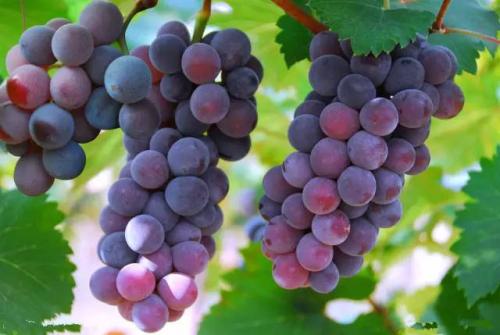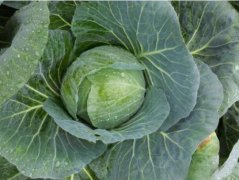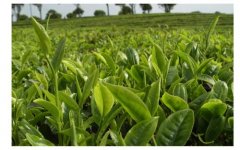What are the nutrients and benefits of grapes? What are the taboos on the efficacy and function of grapes?
Do you like grapes? Do you know what it does? What ingredients do grapes contain? Let's take a look.
Grape belongs to the grape family and has been eaten by human beings since prehistoric times. After the discovery of the New World, European grapes were immediately introduced to America. Grape cultivation in China began in the Western Han Dynasty. According to legend, the European grape varieties were brought back from Dawan country by Zhang Qian on a mission to the Western region.
There are about 8000 grape varieties in the world, and there are more than 500 in China, ranking first among the four major fruits in the world, and the output ranks first in the world. Grapes contain glucose, fructose, a small amount of sucrose and xylose. Organic acids include tartaric acid, oxalic acid, citric acid, malic acid and so on. There are protein, calcium, phosphorus, iron, carotene, nicotinic acid, pantothenic acid, and vitamins C, B1, B2, B6 and more than ten kinds of amino acids, pectin.

Grapes also contain a variety of anthocyanin mono-glucose and double glucose. Grape skins contain pyrethrin, paeoniflorin, delphinin, dwarfin, anemone, anemone-3-β-glucose. When making red wine with skin, the ingredients in these skins go into the wine and play an important role in nutrition and health care.
Scholar Ed sherman reviewed the antioxidant and anti-aging active components of grape seed extract, and cited a number of research results, such as oligomeric proanthocyanidin (oligomeric proanthocyanidins,OPC), which accounts for 80% to 85% of grape seed active components, is a mixture of anthocyanin precursors and belongs to bioflavonoids. In recent years, studies have proved that it has a strong effect of scavenging oxygen free radicals, can prevent more than 80 kinds of diseases caused by oxygen free radicals, and has a good effect of health care and anti-aging.
Brouillard et al., conducted an in-depth study of red wine which has been proved to be beneficial to human health, and found that grapes are rich in polyphenols, which can reduce the incidence of heart disease caused by many fatty foods, because polyphenols are related to the scavenging of free radicals.
Grape seeds contain organic acids such as catechuic acid, epicatechuic acid, caffeic acid and ferulic acid, which are strong antioxidants and can play a stronger antioxidant role with OPC.
In 1997, the University of Wisconsin found that drinking 3 cups of purple grape juice a day reduced platelet agglutination by 40%, similar to the thrombolytic, anticoagulant and fibrinolytic effects of aspirin. It plays a certain role in the prevention of cardiovascular and cerebrovascular diseases, mainly because the flavonoids contained in grapes play a role. Grape skins are more rich in flavonoids, so it is best not to peel grapes when eating grapes.
Grapes contain a substance called resveratrol (Resvoratrol), which prevents cell cancer, according to a study by the University of Illinois. Grapes are rich in glucose, organic acids, amino acids and vitamins, which can benefit and excite the cerebral nerves, and have beneficial effects on neurasthenia and excessive fatigue.
However, the grape nature is slightly cold, do not eat more in cold weather or after cold; those with weak spleen and stomach or diabetes had better not eat or eat less.
- Prev

Kale: does kale contain sugar? What is the nutritional value and efficacy of cabbage?
Is cabbage also an anti-cancer crop? Is it true that some people say it is the best anti-cancer crop? Let's take a look. Cabbage, also known as "cabbage", is the stem and leaf of cruciferous cabbage, also known as "cabbage". Original production
- Next

Organic tea: how about organic tea? The famous organic tea industry will return to the road of glory.
Organic tea sales have been plummeting due to pesticide residues a year ago. Recently, organic red jade has been blessed by the plant medical team, and the famous tea industry has returned to the road of glory. Is this true? Let's take a look. Mingjian Township, mostly a small-scale peasant system, has always been proud of tea, but broke out a few years ago.
Related
- A one-day flower show brings 130 million yuan in orders! Nanhai, this Phalaenopsis exhibition is amazing
- What do the flower language and meaning of Lutheran tree mean? Precautions for planting Lutheran tree
- Encounter Chaoshan Kongfu tea, not without this cup of Phoenix single clump
- The durian market in Vietnam and Thailand is flooded. The price of imported durian has plummeted by 30-40% in a month.
- Shanghai solved the problem of local vegetable supply by planting 80,000 mu of green leafy vegetables.
- Wageningen University has become the best agricultural university in the world for the seventh time in a row.
- The strongest export season of South African grapes is full of challenges, with exports to Russia falling sharply by 21%.
- Sri Lanka is on the verge of bankruptcy, "Tea for debt" Organic Agriculture Revolution aggravates the Food crisis?
- Turning waste into earthworm manure and worm manure into organic fertilizer-A new choice for auxiliary farming
- Organic rice growers shoulder the responsibility of nurturing agricultural talents! Yinchuan Sustainable Farm with Organic Life Camp

